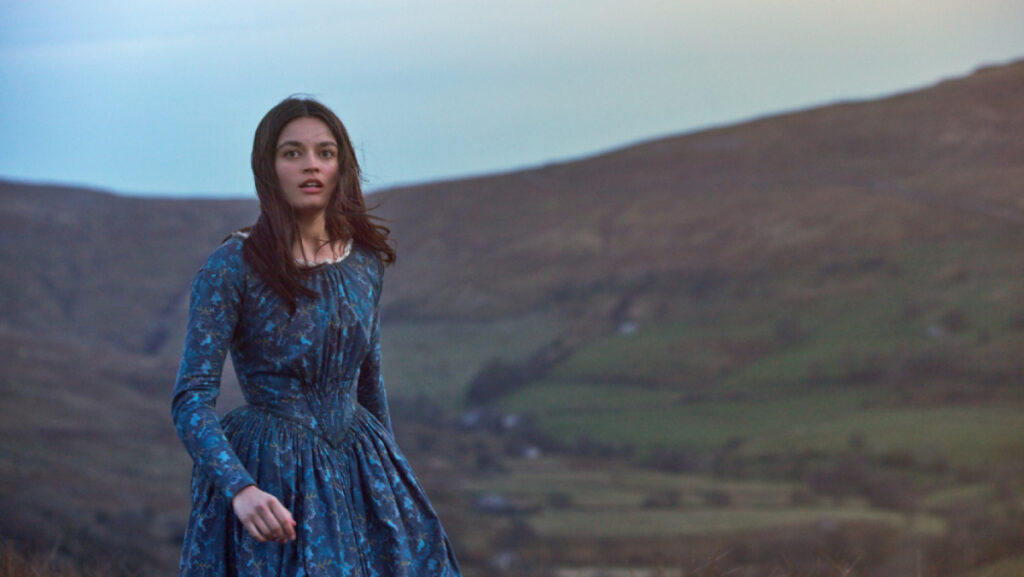Emily Brönte is given a second life in “Emily,” but perhaps one that does not quite line up with her actual experiences. Nonetheless, the spirit and tormented brilliance of the illustrious writer shines through in this sweeping tale of secret romance, grief and wild imagination.
The film portrays a somewhat fictionalized version of the series of events that led Emily Brönte to write her acclaimed novel Wuthering Heights. The story revolves around Emily’s relationships with the people in her life and how they shaped both her writing and herself as a person. Called “the strange one” by many, she grapples with societal expectations in 1800s England and her own changing perception of herself.
“Emily” marks Frances O’Connor’s first time in the director’s chair. A veteran of the silver screen, O’Connor commands the camera with ease and care. Her background as a performer is evident in the brilliant performances she was able to get out of the cast, namely Emma Mackey. Mackey’s emotions resonate clearly onscreen as she handles this fictionalized Emily Brönte with an achingly stunning grace. Through distinct physicality and subtle but impactful changes in demeanor, Mackey commands the screen.
Despite O’Connor’s eye for detail and evident comfortability behind the camera, there are some rather odd choices in “Emily” that can take the viewer out of the moment, notably one scene in the first half of the film. In this scene, Emily (Mackey), her siblings Charlotte (Alexandra Dowling), Anne (Amelia Gething) and Branwell (Fionn Whitehead), and their father’s new curate, William Weightman (Oliver Jackson-Cohen), play a game. They take turns putting a mask over their faces and pretending to be a well-known figure while the others guess who they are portraying. There are cuts to black used to show the passing of time as they laugh and play the game, although this feels unnecessary. Likely not more than 20 minutes passed in the world of the film between each cut to and from black, so it feels rather strange. It pauses the film in a way that suggests plenty of time passed when that was not the case. It does not even make sense stylistically as this type of cut is never used again in the film.
Without giving away too much of the film’s intrigue, it must be said that the relevance of the mask to the film and its functionality as a symbol of strangeness is never quite utilized in a way that makes a whole lot of sense with the rest of the story. Is Emily really strange like people say, or was there just a societal distrust of intellectual women? This is a question that is toyed with by O’Connor. Emily’s occasional fixation on this mask suggests that she is truly strange in some manner. This would be fine and, in fact, rather interesting, if not for the fact that the scenes involving this mask are brief, confusing, and feel out of place in the narrative.
The script is lacking in some areas and fails to depict how certain supporting characters get from one decision to the next or change their opinion of a person. Character development is apparently something reserved only for a select few, specifically Emily and Weightman, with whom Emily has an affair in the film (but not in real life). Although, where clear development exists, the film prevails.
The central romance is by far the strongest part of the film. It is a beautiful and painful story of sexual repression and longing. Hope flickers, burns, then dies in Emily during the time that she knows and falls in love with Weightman. It is heart-wrenching to watch play out, but once their story begins, the film starts to soar.
It must also be mentioned that Emily’s closeness with her brother Branwell is better understood as the film goes on. This is a particularly fascinating relationship that is explored well. The stirring score by Abel Korzeniowski exemplifies this bond between Emily and Branwell, particularly in the piece “Freedom in Thought,” named for a scene in which the two shout this phrase at the hilly plains in front of them. The score in general is a highlight of the film. It is memorable and has a clear place within the film apart from just being used to underscore dialogue.
“Emily,” while not without its many faults, is a stunning portrait of a brilliant woman and the people around her. The story falters a bit at times, but comes back at full force when it truly needs to.




















